The design of casino playing cards is a fascinating journey through time, reflecting cultural shifts, technological advancements, and the changing tastes of players worldwide. From the hand-painted decks of the medieval era to the sleek digital cards used in today's online casinos, the evolution of card design tells a story as intricate and colorful as the games themselves.
The Origins of Playing Card Design
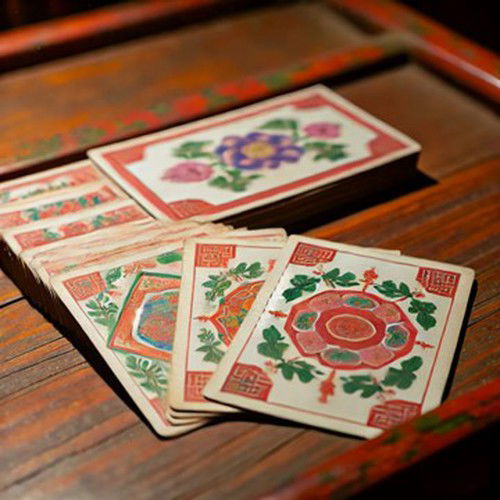
Playing cards are believed to have originated in China during the Tang dynasty, around the 9th century. These early cards were a far cry from the standard decks we know today, often featuring ornate, hand-painted designs that were as much a display of artistic talent as they were a tool for gaming. The cards were typically made of paper or thin wood, and Chinese cultural motifs and symbols deeply influenced their designs.
As playing cards spread to other regions, particularly the Islamic world, their design began to take on new forms. For example, the Mamluk deck of the 12th century featured intricate geometric patterns and calligraphy, with no human figures depicted, per Islamic artistic traditions. These cards were also notable for their rich use of color and detailed craftsmanship, setting a high standard for playing card design.
For a detailed exploration of the history and origins of playing card design, the article The History of Playing Cards provides a comprehensive look at how these early designs influenced the development of playing cards worldwide.
The European Influence: From Handcrafted Art to Mass Production
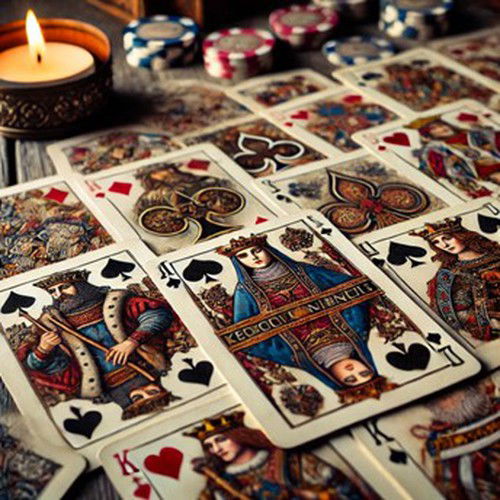
Ad
When playing cards arrived in Europe in the late 14th century, they quickly gained popularity, and regional variations in card design began to emerge. European decks introduced the suits of hearts, diamonds, spades, and clubs, which have become the standard in most of the world today. The designs of the court cards—kings, queens, and knaves—were often inspired by European royalty and the nobility, with each country adding flair to the artwork.
In the early days, playing cards in Europe were meticulously hand-painted by artisans, making them expensive and accessible only to the wealthy. The cards often featured elaborate designs with intricate details and rich colors. However, with the invention of the printing press in the 15th century, playing cards became more widely available. The mass production of cards allowed for standardized designs, though regional variations persisted.
The French were particularly influential in standardizing card design. By the late 17th century, the French deck of 52 cards had become the most popular in Europe, with its suits of hearts, diamonds, spades, and clubs and stylized court cards. This design was eventually adopted worldwide and remains the basis for most modern playing cards.
The Golden Age of Casino Card Design
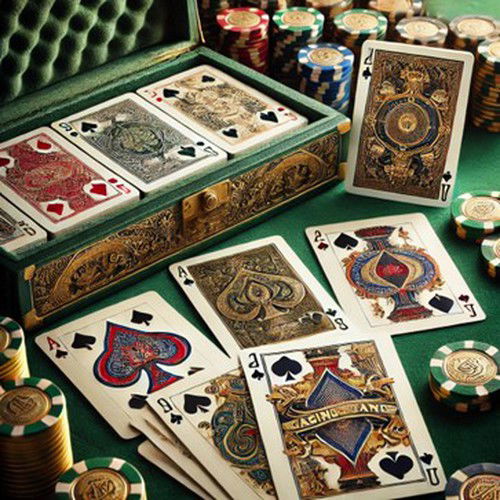
The 19th and early 20th centuries are often considered the golden age of casino card design. During this period, the Industrial Revolution and advances in printing technology allowed for even more elaborate designs and the introduction of innovations such as indices (the small numbers and letters in the corners of cards), making cards more straightforward to read when held in a fan.
Casino cards of this era were often designed to reflect the glamour and excitement of the casinos themselves. Decks featured bold, eye-catching colors and designs, usually incorporating gold and silver accents to evoke a sense of luxury. The backs of the cards were often adorned with intricate patterns, monograms, or the logos of the casinos, adding to their allure.
During this time, specialty decks began to emerge, such as those used for specific casino games like Poker or Blackjack. These decks often featured unique designs tailored to the game, further enhancing the gaming experience and influencing the evolution of card games.
Ad
Modern Innovations: From Casinos to Digital Platforms
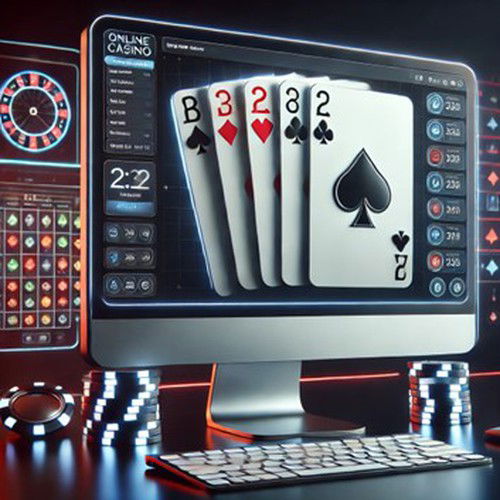
The modern era of casino card design has shifted from physical decks to digital ones, driven by the rise of online casinos and mobile gaming platforms. While traditional card designs still play a significant role in physical casinos, digital platforms have opened up new possibilities for card design, allowing for animations, dynamic graphics, and interactive features that were previously impossible.
In online casinos, games like Blackjack and Poker often feature sleek, minimalist designs prioritizing readability and user experience. The cards are designed to be easily recognizable on screens of all sizes, with high-contrast colors and clean, modern aesthetics. These digital cards can also include animations, such as flipping or shuffling, to add a sense of realism to the online gaming experience.
One of the most popular card games in online casinos is Blackjack, which has seen numerous design innovations in its digital form. From realistic card textures to customizable table layouts, online Blackjack offers players a range of design options that enhance their gaming experience. For those interested in exploring the world of online Blackjack, this guide provides an excellent introduction to the game and its design features.
The Future of Casino Card Design: Virtual Reality and Beyond

With the continuous march of technology, the future of casino card design is poised to be even more innovative. Virtual reality (VR) and augmented reality (AR) are set to transform the gaming industry, offering players fully immersive experiences that transcend traditional card games. In a VR casino, players could engage with 3D cards that mimic the feel of their physical counterparts, complete with customizable designs and interactive features that respond to their every move.
Ad
AI-driven card designs are on the horizon, where algorithms could potentially craft unique card designs tailored to a player's preferences or even birth entirely new games with their own distinct aesthetics. These advancements are set to elevate casino card design, fusing art, technology, and gaming in ways that were once beyond imagination.
For those interested in exploring the latest trends and innovations in casino card games, the collection on this page offers a glimpse into the cutting-edge designs and features shaping the industry's future.
Limitless Possibilities: The Future of AI-Generated Casino Card Game Design
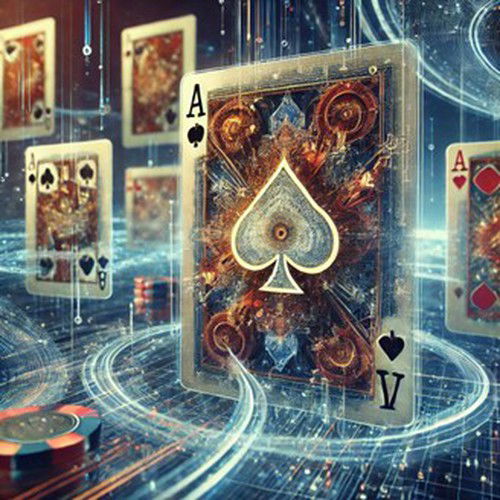
As technology advances, the future of casino card game design is set to be revolutionized by artificial intelligence (AI). AI-driven design is poised to push the boundaries of creativity, enabling the generation of unique, personalized card designs that adapt in real-time to the preferences and styles of individual players. This means that every deck could become a living piece of art, evolving with each hand played and incorporating elements that reflect cultural influences, personal aesthetics, or even the players' emotional states.
AI's potential to create entirely new card games, complete with their distinct visual styles and rules, is virtually limitless. Imagine a game where the designs of the cards shift dynamically as you play, with patterns, colors, and symbols that morph to enhance the gaming experience. This level of customization and innovation could make each game a unique experience tailored specifically to the players involved.
Moreover, AI can analyze player behavior and preferences to generate designs that resonate on a deeper level, making the gaming experience more immersive and engaging. The seamless integration of AI in card game design represents a fusion of creativity and technology, heralding a new era where the possibilities for card games are as boundless as the imaginations of those who play them.
The line between art and gaming will blur in the future, offering a visually stunning and emotionally rich experience that will keep players coming back for more. AI-generated casino card games will redefine what is possible in game design and set new standards for player engagement and personalization in the gaming industry.
Ad
Conclusion
The evolution of casino card game design is a testament to the enduring appeal of these games, which have continuously adapted to the changing tastes and technologies of the times. From the hand-painted decks of ancient China to the sleek, digital cards of modern online casinos, the design of playing cards has always been about more than just aesthetics—it's about enhancing the gaming experience, reflecting cultural shifts, and embracing technological advancements.
As we look to the future, it's clear that the design of casino card games will continue to evolve, offering players new and exciting ways to engage with their favorite games. Whether you're a fan of traditional cards or excited about the possibilities of digital and virtual designs, the world of casino card games is one that's rich with history, innovation, and endless potential, inspiring us with the possibilities that lie ahead.





— Comentarios0
Se el primero en comentar